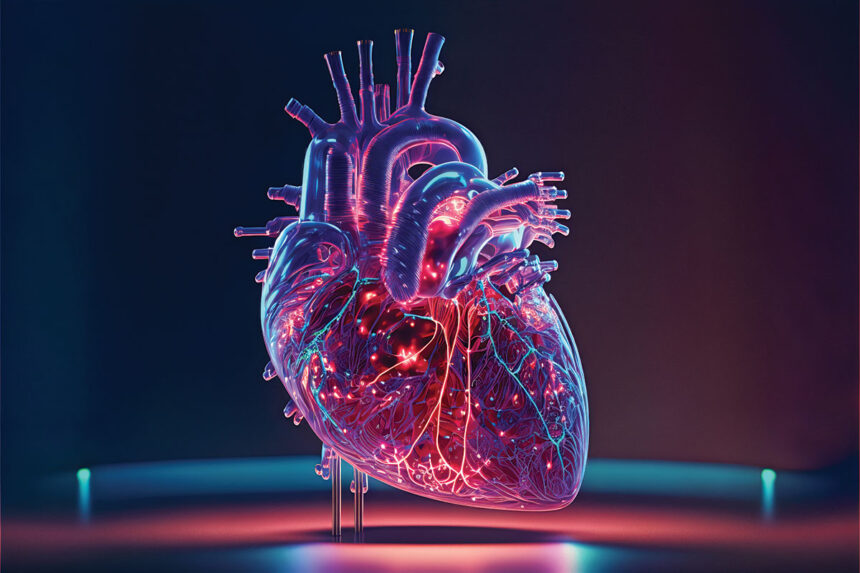Introduction
The field of cardiology is entering a new era where artificial intelligence (AI), data analytics, wearable devices, and robotics are redefining how heart diseases are diagnosed, treated, and prevented.
From predicting cardiac risks years in advance to performing robotic surgeries with unmatched precision, technology is transforming heart care into a smarter, faster, and more personalized experience.
Let’s explore how these technological innovations are shaping the future of cardiology and improving patient outcomes worldwide.
The Role of Technology in Modern Cardiology
1. From Reactive to Predictive Medicine
Traditionally, cardiology has focused on diagnosing and treating heart diseases after they occur. Now, with AI-driven predictive analytics, doctors can detect risks long before symptoms appear.
Advanced algorithms analyze millions of patient records, identifying subtle patterns that may signal early stages of heart disease — allowing timely lifestyle or treatment interventions.
Example:
AI systems can predict the likelihood of a heart attack or stroke based on medical history, genetic data, and daily activity levels — enabling proactive care.
Artificial Intelligence: Revolutionizing Heart Care
1. AI in Diagnosis and Imaging
AI-powered tools are now capable of reading echocardiograms, CT scans, and MRIs with incredible accuracy.
They detect heart abnormalities — such as blocked arteries, valve malfunctions, or irregular rhythms — faster than traditional methods.
Key benefits:
- Faster and more accurate diagnosis
- Early detection of heart conditions
- Reduction in human error
AI models can even identify early signs of heart disease that are invisible to the human eye, ensuring timely treatment.
2. AI in Personalized Treatment
AI-driven systems analyze individual patient data — including genetics, lifestyle, and treatment response — to create customized care plans.
For example:
- Predicting which medication works best for a specific patient
- Optimizing dosage to reduce side effects
- Monitoring progress in real-time
This personalized medicine approach ensures better outcomes and fewer hospital readmissions.
3. AI-Powered Virtual Assistants and Chatbots
AI chatbots and virtual cardiac assistants provide 24/7 support to patients.
They can:
- Remind users to take medications
- Monitor symptoms via wearable data
- Offer lifestyle advice and emergency alerts
This reduces the burden on healthcare providers while keeping patients engaged in managing their heart health.
Wearable Technology and Remote Monitoring
1. Smartwatches and Fitness Trackers
Devices like Apple Watch, Fitbit, and Samsung Galaxy Watch can monitor heart rate, detect irregular rhythms, and even perform ECGs (electrocardiograms).
These wearables collect real-time health data and send it to doctors for ongoing evaluation.
Benefits:
- Early detection of arrhythmias and cardiac stress
- Continuous remote patient monitoring
- Encouragement for users to maintain heart-healthy habits
2. Remote Cardiac Monitoring Devices
For patients with existing conditions, advanced sensors and implantable devices track heart activity and transmit data directly to cardiologists.
This enables real-time detection of cardiac events, allowing immediate intervention and reducing hospital visits.
Telecardiology: Breaking Geographic Barriers
Telemedicine has become a cornerstone of modern cardiology. Through secure video consultations and digital diagnostics, patients can connect with top cardiologists from anywhere.
Telecardiology benefits include:
- Faster consultations and second opinions
- Access to specialized care in remote areas
- Reduced waiting times and travel costs
This approach became especially vital during the COVID-19 pandemic and continues to grow as digital infrastructure expands.
Robotics and 3D Technology in Cardiac Surgery
1. Robotic-Assisted Cardiac Surgery
Robotic systems allow surgeons to perform complex heart surgeries with precision and minimal invasion.
Controlled through high-definition 3D consoles, these robots enhance the surgeon’s dexterity and reduce human error.
Advantages:
- Smaller incisions and scars
- Reduced pain and infection risk
- Faster recovery time
Robotic technology is transforming procedures like valve repair, coronary bypass, and atrial fibrillation surgery.
2. 3D Printing and Virtual Reality (VR)
3D printing enables cardiologists to create detailed heart models for pre-surgical planning and training.
Meanwhile, virtual reality simulations allow surgeons to rehearse complex procedures in a risk-free environment.
These technologies improve surgical precision and patient outcomes, reducing the chances of complications.
Big Data and Predictive Analytics in Cardiology
With billions of heart-related data points available through hospital databases, wearables, and electronic health records, big data analytics helps cardiologists:
- Identify population-level risk factors
- Track treatment outcomes over time
- Develop more effective prevention programs
Predictive analytics allows for data-driven decision-making, transforming heart care from reactive to preventive.
The Future: Integrating AI with Human Expertise
While AI and technology provide incredible tools, they are not meant to replace cardiologists — rather, they enhance their capabilities.
The future of cardiology lies in collaboration between advanced digital tools and expert human judgment to deliver the highest standard of care.
Upcoming innovations may include:
- AI-assisted robotic surgeries guided by real-time imaging
- Genetic-based heart disease prediction models
- Smart implants for continuous cardiac monitoring
Conclusion
The future of cardiology is digital, intelligent, and patient-centered. With the power of AI, wearable technology, telemedicine, and robotics, heart care is becoming more accurate, accessible, and preventive than ever before.
These innovations don’t just treat disease — they help stop it before it starts.
By embracing technology, we are moving toward a world where heart health is predictable, manageable, and personalized for everyone.
FAQs
1. How is AI improving heart disease diagnosis?
AI systems analyze imaging data, ECGs, and patient history to detect heart abnormalities faster and more accurately than traditional methods.
2. Can wearables really detect heart problems?
Yes. Devices like smartwatches can detect irregular heartbeats, measure pulse rate, and even perform ECG tests to alert users of potential cardiac issues.
3. What is telecardiology?
Telecardiology uses digital communication and video platforms to connect patients with cardiologists remotely, ensuring faster and more convenient consultations.
4. Are robotic heart surgeries safe?
Robotic-assisted heart surgeries are highly precise and safe when performed by trained specialists. They minimize pain, infection, and recovery time.
5. What does the future hold for cardiology?
The future will feature AI-powered diagnostics, personalized medicine, smart implants, and robotic surgeries, making cardiac care faster, safer, and more accurate.





